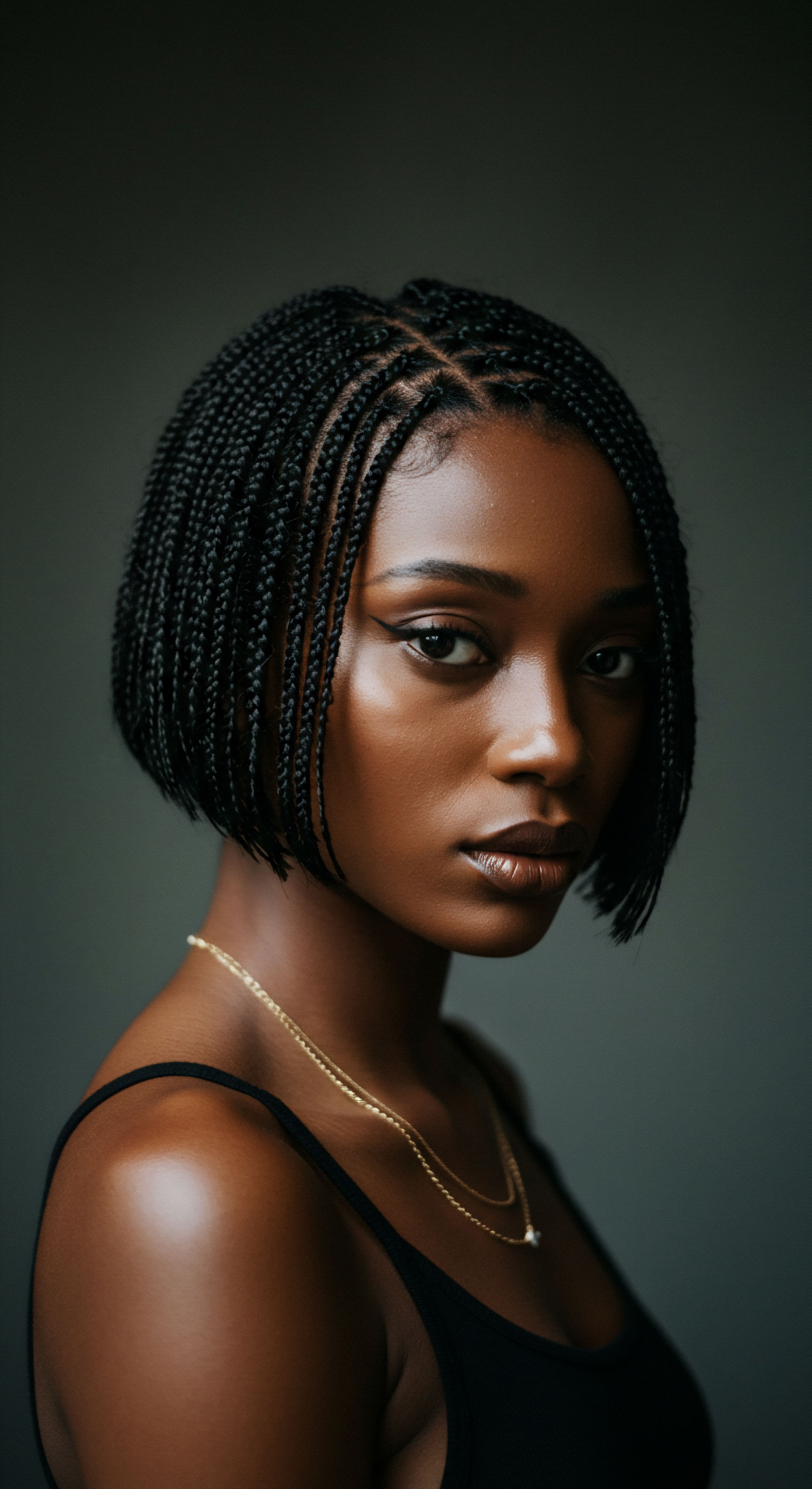
Roots
The quest for hair vitality often leads us along paths worn smooth by time, to remedies whispered through generations. Among these, pure henna, derived from the sun-kissed leaves of Lawsonia inermis, holds a revered position. Its reddish-orange pigment, lawsone, has adorned skin and hair for millennia, a silent testament to its enduring presence in cultures across North Africa, Asia, and the Middle East.
But beyond the striking hue it imparts, does this ancient botanical truly strengthen hair? To consider this, we must first look to the very foundation of hair itself, understanding its delicate yet resilient structure, and then gently unravel the ways in which henna interacts with this living fiber.
Our hair, whether tightly coiled, softly wavy, or gracefully straight, shares a fundamental architectural blueprint. Each strand emerges from a follicle, a tiny organ nestled within the scalp, and is primarily composed of keratin, a fibrous protein. This keratin is arranged in three distinct layers ❉ the medulla, the innermost core (often absent in finer hair); the cortex, the main body of the hair strand responsible for its strength, elasticity, and color; and the cuticle, the outermost protective layer, composed of overlapping, scale-like cells, much like shingles on a roof. The health and integrity of these layers dictate how hair responds to its environment, to styling, and to the various substances we apply to it.
Hair’s resilience and appearance depend on its layered keratin structure, from the inner cortex to the outer cuticle.
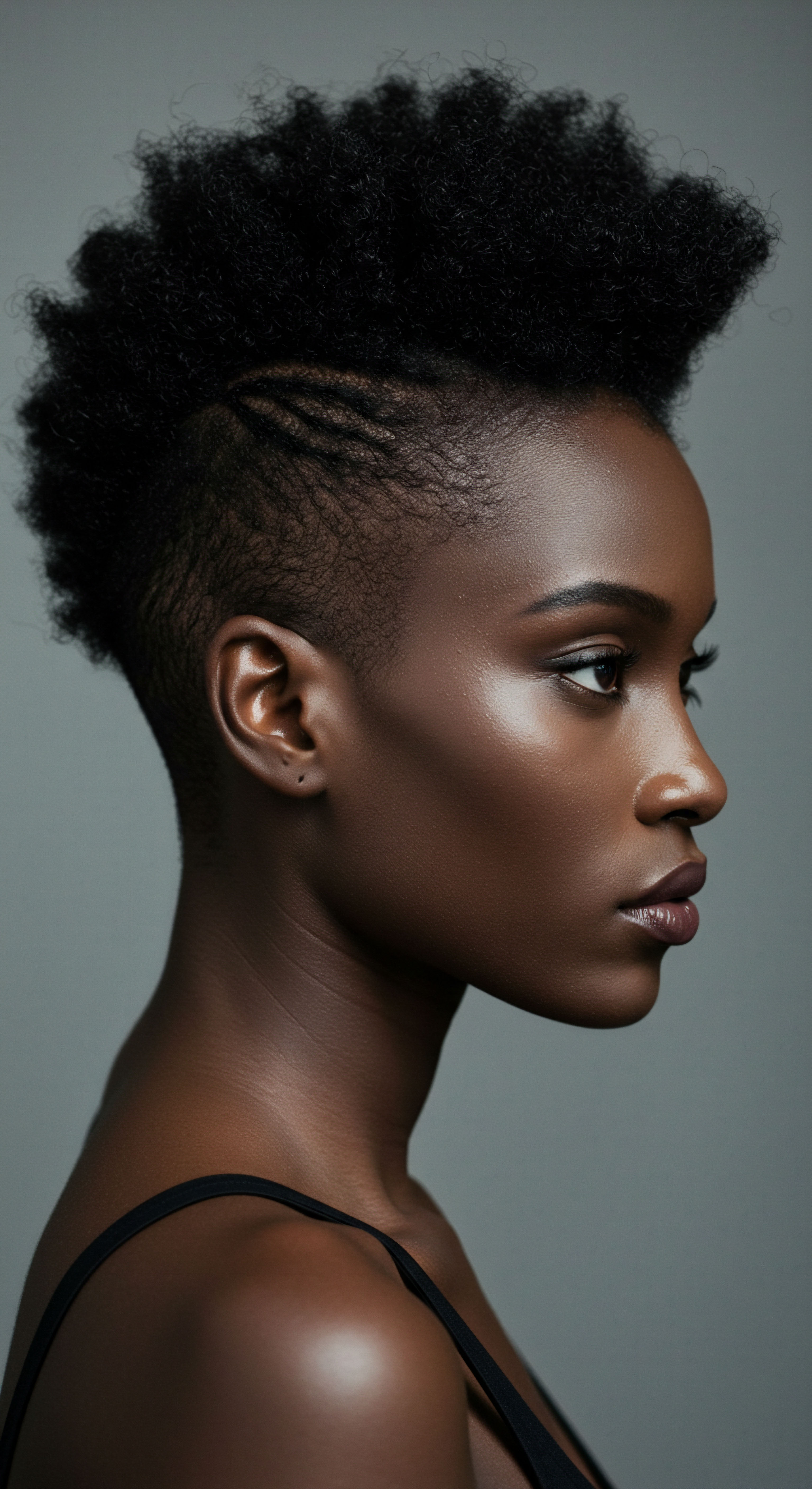
Hair’s Natural Architecture
To truly appreciate henna’s role, a deeper acquaintance with hair’s composition is helpful. The cortex, a dense bundle of keratin protein chains, provides hair with its tensile strength, allowing it to stretch and return to its original shape. These protein chains are held together by various bonds, including disulfide bonds, which are particularly robust and contribute significantly to hair’s overall resilience. The cuticle, though thin, serves as the first line of defense against external stressors, regulating moisture and protecting the delicate cortex within.
When these cuticle scales lie flat and smooth, hair appears shiny and feels soft. When they are raised or damaged, hair can feel rough, appear dull, and be more prone to tangles and breakage.
- Keratin ❉ The primary protein building block of hair, responsible for its structural integrity.
- Cortex ❉ The central, strength-giving layer of the hair strand, composed of bundled keratin fibers.
- Cuticle ❉ The outermost protective layer of overlapping scales, shielding the inner cortex.

The Lawsone Molecule’s Adherence
At the heart of pure henna’s action lies lawsone, also known as 2-hydroxy-1,4-naphthoquinone. This natural dye molecule, present in the dried leaves of the henna plant, becomes active when mixed with a mildly acidic liquid, such as water or tea. Once released, lawsone possesses a remarkable affinity for the keratin protein in hair.
It forms a bond with the keratin molecules, primarily adhering to the outer layers of the hair shaft, including the cuticle and sometimes the outermost part of the cortex. This binding process is what gives hair its characteristic reddish-orange stain.
The interaction of lawsone with hair protein is distinct from that of synthetic dyes. Traditional permanent chemical dyes often rely on alkaline agents like ammonia to swell the hair cuticle, allowing dye precursors to penetrate deep into the cortex where they undergo oxidation and become trapped. Henna, by contrast, typically works by coating the hair shaft, creating a protective layer around each strand. This coating action can contribute to a feeling of increased thickness and body, as the individual hair strands are now slightly larger in diameter.
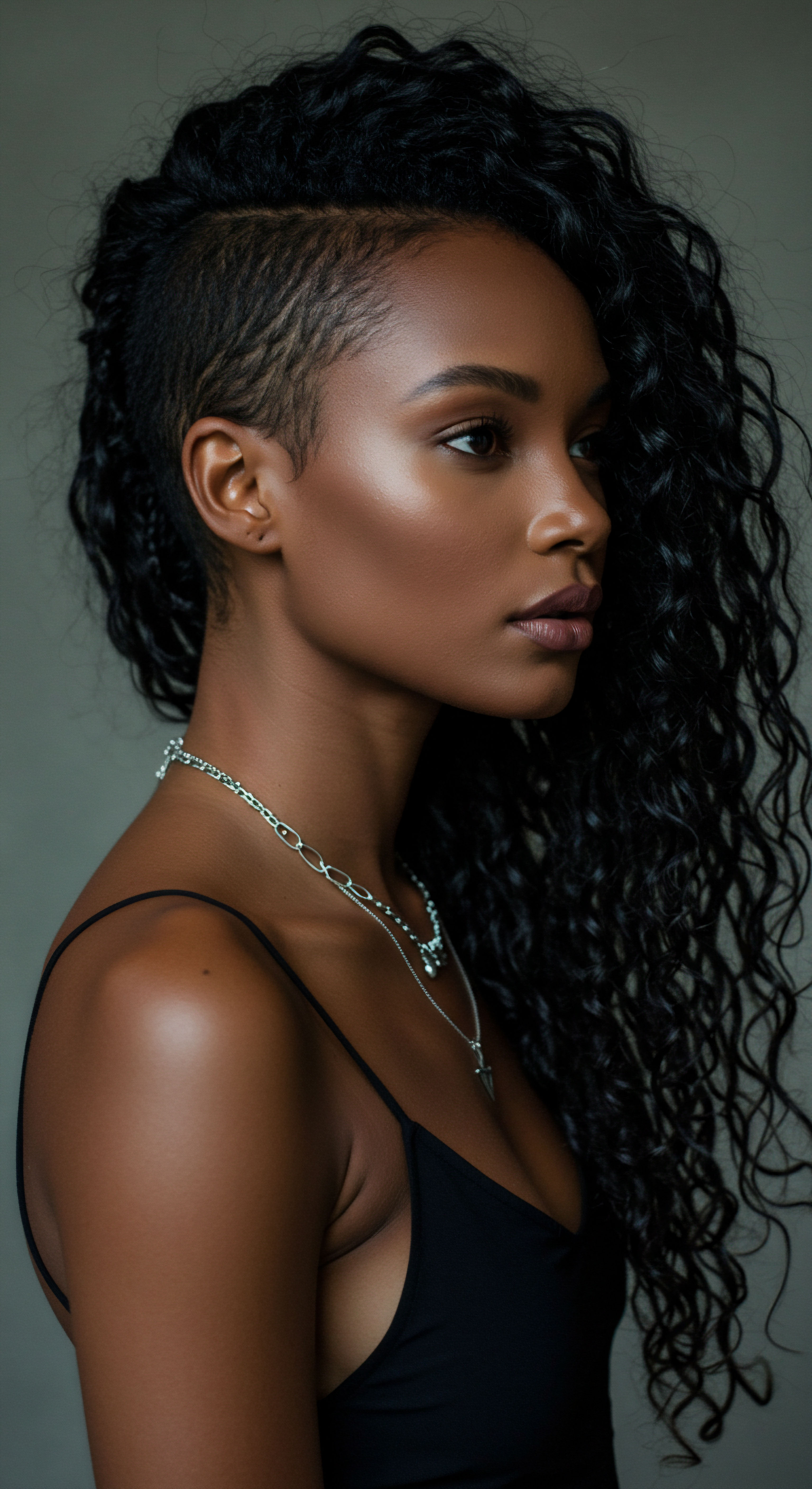
Ancient Pigments and Modern Perceptions
For thousands of years, cultures have valued henna not only for its coloring properties but also for its perceived benefits to hair health. Ancient Egyptians used it for mummification, and in many traditions, it is incorporated into rituals and celebrations, symbolizing beauty, good fortune, and fertility. The belief that henna strengthens hair is deeply rooted in these historical practices.
While scientific understanding of hair structure and chemical interactions is relatively recent, the empirical observations passed down through generations certainly noted changes in hair’s appearance and feel after henna applications. These historical uses lay the groundwork for our contemporary investigation into henna’s true impact on hair’s fortitude.
| Hair Layer Medulla |
| Primary Function Innermost core, often absent |
| Henna's Interaction Minimal direct interaction |
| Hair Layer Cortex |
| Primary Function Strength, elasticity, color |
| Henna's Interaction Lawsone binds to outer keratin, some penetration |
| Hair Layer Cuticle |
| Primary Function Protective outer scales |
| Henna's Interaction Lawsone coats and adheres to surface, smoothing scales |
| Hair Layer Understanding each layer clarifies how henna's lawsone molecule coats and interacts with hair's protein structure. |
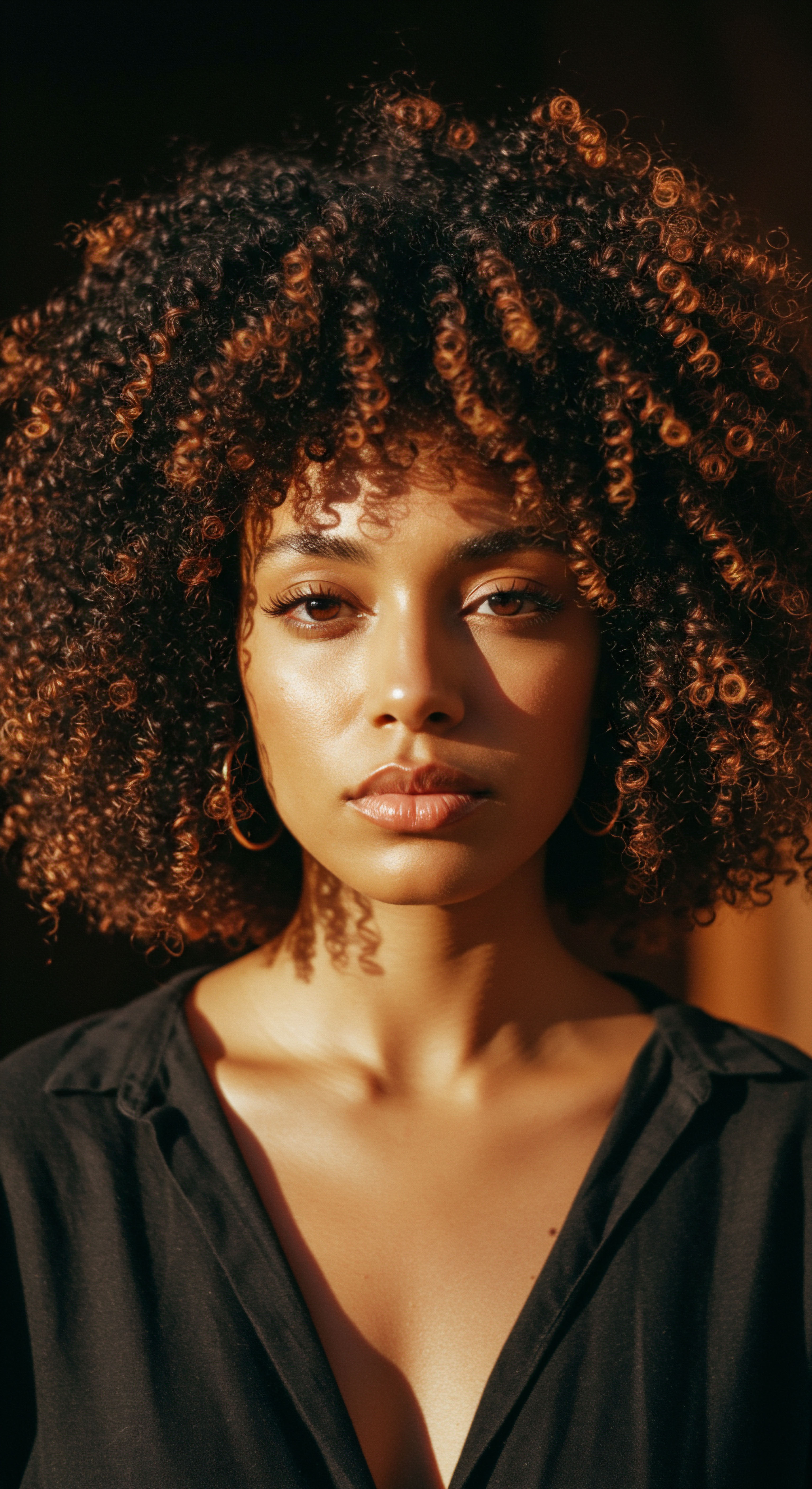
Ritual
Moving from the fundamental understanding of hair’s architecture, our exploration turns to the practical wisdom and application of pure henna. The way we engage with our hair, the routines we adopt, and the substances we introduce to it all shape its vitality. When we consider henna, we are not simply contemplating a botanical compound; we are stepping into a practice steeped in tradition, a ritual of care that extends beyond mere cosmetic alteration. This section seeks to clarify the tangible effects of pure henna on hair, distinguishing between perceived benefits and structural changes, offering guidance for those who wish to approach this ancient ingredient with gentle hands and informed minds.
The application of henna is a deliberate process, often involving careful preparation of the powder, allowing the dye to release, and then patiently applying the paste to the hair. This ritual, in itself, fosters a deeper connection to one’s hair, encouraging observation and mindful care. The immediate sensation after rinsing henna can be one of remarkable change ❉ hair often feels thicker, more substantial, and appears shinier. This perceived “strengthening” is a common experience, but to truly comprehend its nature, we must look closer at the physical and chemical alterations occurring on the hair shaft.
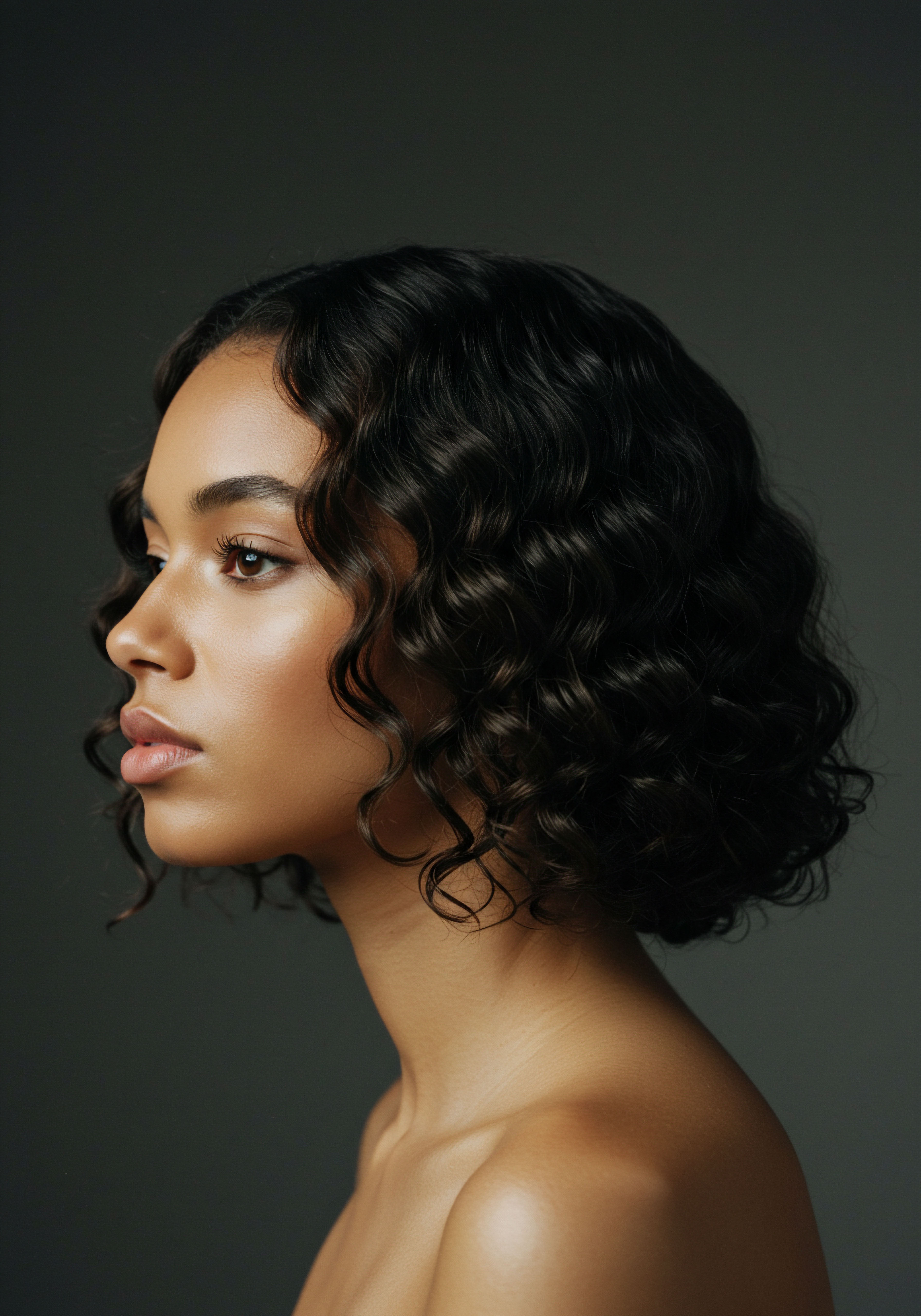
Preparing the Earth’s Gift
The efficacy of pure henna hinges significantly on its preparation. For lawsone to release optimally, the finely ground henna powder needs to be mixed with a mildly acidic liquid, such as water, lemon juice, or black tea, and allowed to sit for several hours. This dye release period ensures that the lawsone molecules are ready to bind to the hair’s keratin. The consistency of the paste is also important, as it influences ease of application and thoroughness of coverage.
The quality of the henna powder itself is paramount. Genuine, pure Lawsonia inermis powder, free from metallic salts or other adulterants, is essential. Contaminants can lead to unpredictable results, including undesirable colors or even damage, particularly if chemical dyes are later applied to hair treated with impure henna. This commitment to purity is a cornerstone of responsible hair care, especially for textured hair which can be particularly sensitive to harsh chemicals.
- Dye Release ❉ The process where lawsone becomes active, often requiring acidic liquid and time.
- Purity ❉ Ensuring the henna powder is 100% Lawsonia inermis, without metallic salts or additives.
- Consistency ❉ Achieving a smooth, workable paste for even application.
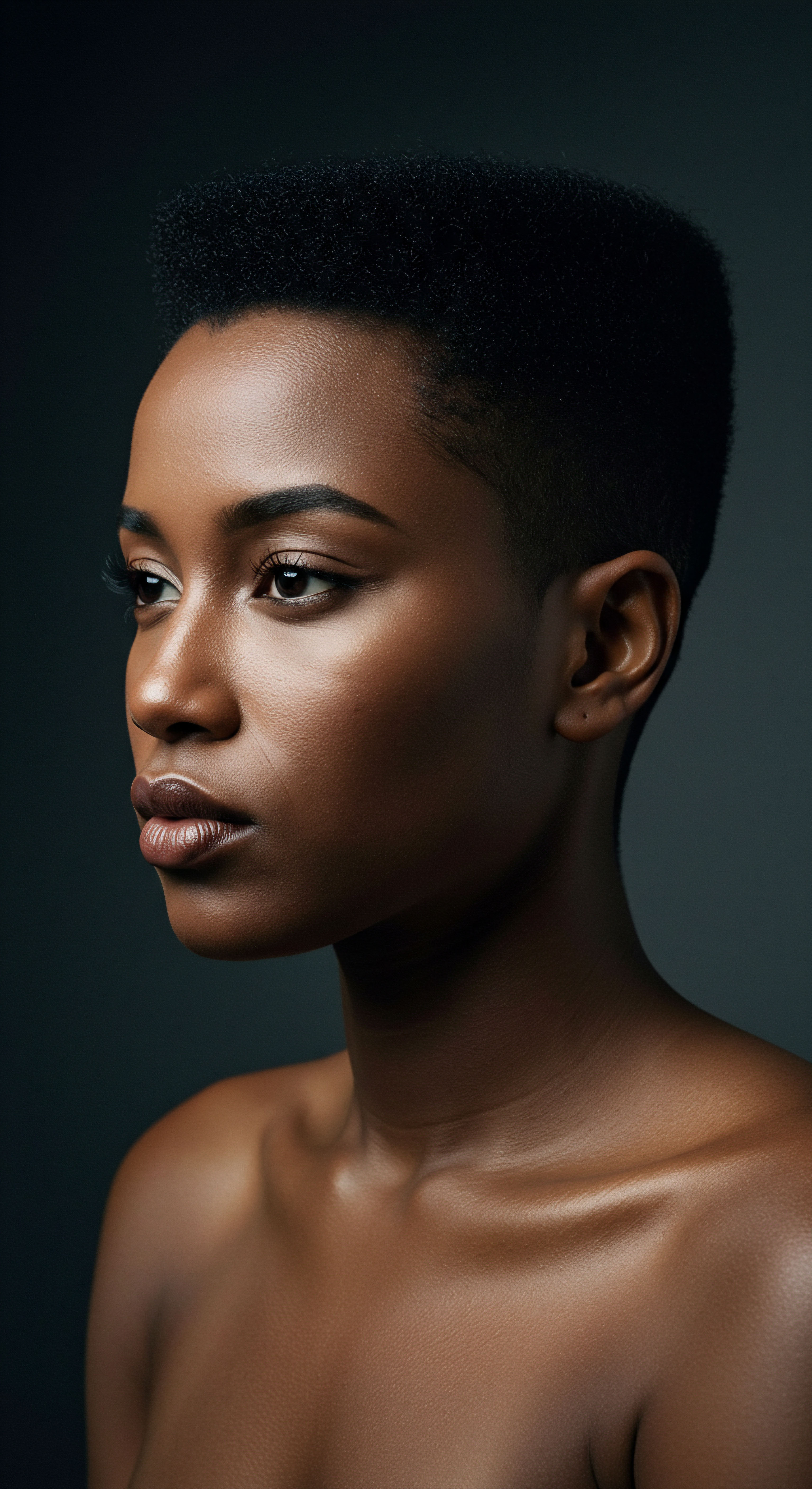
The Henna Hair Experience
Upon application, lawsone molecules bind to the keratin on the hair’s surface. This creates a protective layer, effectively coating each strand. This coating can result in a reduction of hair porosity, meaning the hair absorbs less moisture from the environment, which can be beneficial for some hair types, particularly those prone to excessive frizz. The added layer can also give the impression of increased hair thickness and volume, contributing to the sensation of “strengthened” hair.
Henna’s coating action reduces hair porosity and creates a perception of increased strand thickness and volume.
It is important to differentiate this coating action from internal structural repair. While henna certainly alters the hair’s surface, it does not rebuild broken protein bonds within the hair cortex in the same way that some protein treatments might. Instead, it provides an external shield, making the hair feel more robust and less susceptible to environmental stressors and mechanical damage from styling. This external reinforcement, while not a true internal strengthening of the hair’s core, offers a tangible benefit in terms of manageability and appearance.

Beyond the Stain
Beyond its primary role as a dye, pure henna also offers other benefits that contribute to overall hair health. Its antifungal and antimicrobial properties can help maintain a healthy scalp, potentially reducing issues like dandruff and scalp irritation. A healthy scalp is the foundation for healthy hair growth, so these ancillary effects play a supporting, yet significant, role in hair vitality. Some studies also point to henna’s antioxidant content, which may help protect hair from environmental damage.
However, it is also important to note that henna, particularly with frequent use, can sometimes lead to dryness in certain hair types, especially if the hair is already prone to dryness or if the henna mixture is too acidic. This is a consideration, particularly for textured hair which often requires significant moisture. Balancing henna applications with deep conditioning treatments and ensuring proper hydration before and after use can help mitigate this potential side effect, allowing individuals to still enjoy the benefits of henna without compromising their hair’s moisture balance.
| Effect Category Coloring |
| Description Reddish-orange stain |
| Mechanism Lawsone binding to keratin |
| Effect Category Perceived Strength |
| Description Hair feels thicker, more substantial |
| Mechanism Lawsone coating the hair shaft |
| Effect Category Porosity Reduction |
| Description Hair absorbs less moisture |
| Mechanism External coating smooths cuticle |
| Effect Category Scalp Health |
| Description Reduced dandruff, irritation |
| Mechanism Antifungal, antimicrobial properties |
| Effect Category Potential Dryness |
| Description Hair feels stiff, less pliable |
| Mechanism Astringent nature, especially with overuse or improper mix |
| Effect Category Henna provides color and a protective coating, but its drying potential requires careful consideration for overall hair health. |

Relay
Our journey into the properties of pure henna deepens now, shifting towards a more scientific and interconnected understanding of its influence on hair. The question of whether pure henna truly strengthens hair extends beyond anecdotal experiences and practical application, inviting us to examine the very mechanisms at play, considering biological, cultural, and even historical factors that shape our perception and interaction with this plant. We seek to unravel the complexities, drawing upon research and data to illuminate henna’s actual impact on hair’s resilience.
The term “strengthening” in hair care can be multifaceted. Does it imply an increase in tensile strength, a reduction in breakage, or simply a feeling of increased density? For pure henna, the evidence points towards a reinforcement of the hair’s external structure rather than a deep, internal protein repair. This distinction is crucial for managing expectations and for understanding how henna fits into a comprehensive hair care regimen, particularly for textured hair which often benefits from treatments that address both external protection and internal integrity.

Unpacking Lawsone’s Adherence
The primary mechanism by which lawsone interacts with hair involves a Michael addition reaction with the free amino groups present in keratin. This forms a covalent bond, a strong chemical link, primarily on the surface and outer layers of the hair shaft. This binding is what makes henna’s color so persistent. This external adherence effectively forms a protective film around each hair strand.
Consider a study published in the International Journal of Dermatology which, while focusing on hair dye damage and restoration, notes that henna can cause some surface damage to the hair cuticle, though this is often associated with the ‘drying’ effect it can have. Yet, other research using Scanning Electron Microscopy (SEM) has indicated a positive impact on the cuticle pattern and an increase in the diameter of hair samples after henna application, suggesting a smoothing and thickening effect on the hair’s outer layer. This apparent contradiction highlights the complexity ❉ the “damage” might be a consequence of dehydration, rather than a structural degradation of keratin, and the perceived “strengthening” stems from the added mass and smoothed cuticle.
Pure henna strengthens hair by coating the cuticle and forming bonds with external keratin, increasing strand diameter and resistance to damage.
This external coating, by making the hair shaft thicker, can increase its resistance to mechanical stress. A thicker strand is less prone to breakage from brushing, styling, or environmental friction. This physical reinforcement contributes significantly to the feeling of stronger hair and can lead to better length retention, especially for textured hair which is often more fragile and prone to breakage due to its structural characteristics and styling demands.
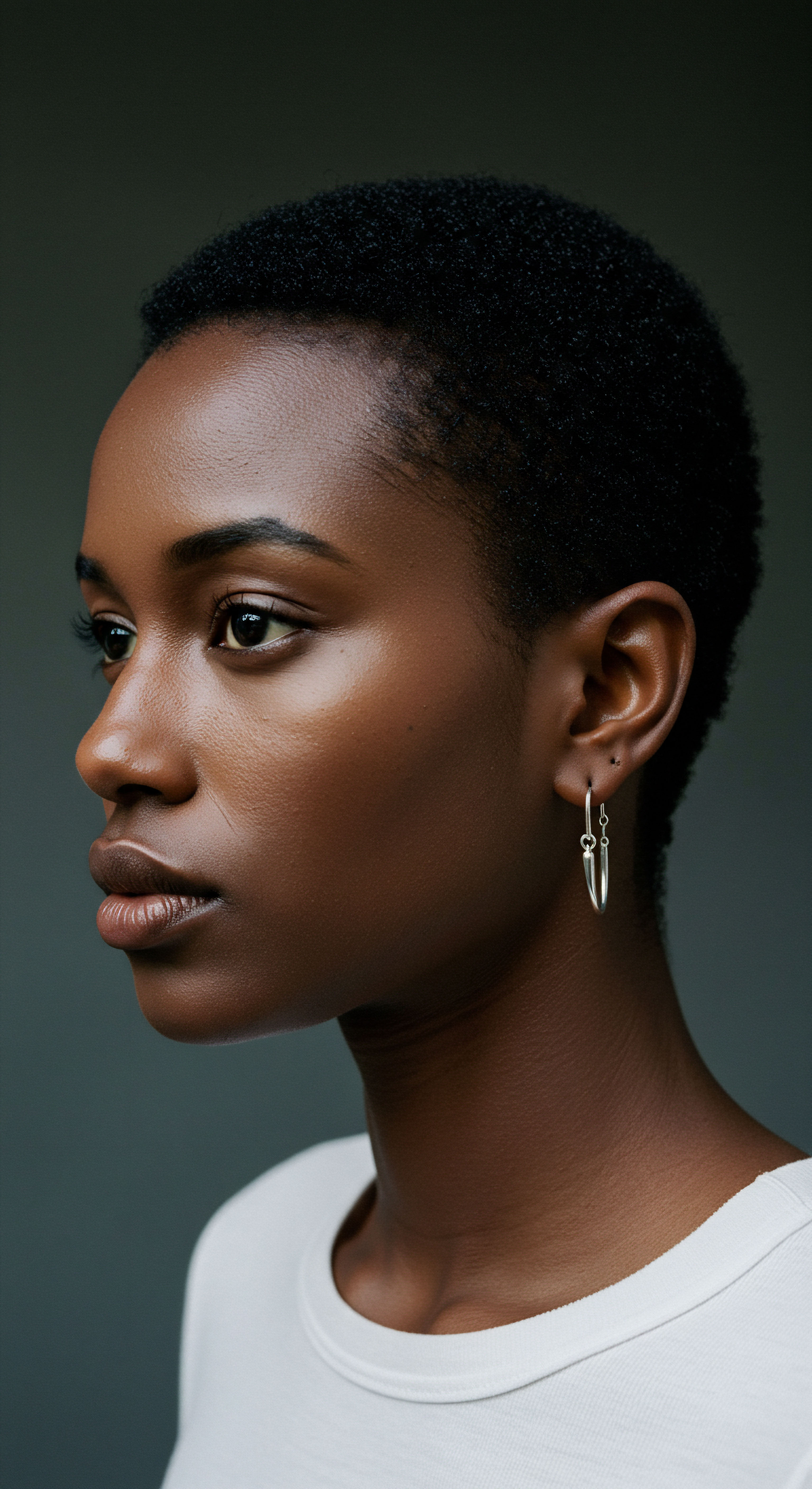
The Perceived Versus the Actual
The subjective experience of “stronger” hair after henna application is widely reported. Hair feels less prone to tangles, appears shinier, and holds styles better. This is largely due to the lawsone coating smoothing the cuticle layer. When cuticle scales lie flat, they reflect light more effectively, resulting in increased shine.
They also interlock more smoothly, reducing friction and tangling. This smoothing action, while not fundamentally altering the internal protein structure, significantly enhances the hair’s cosmetic appearance and manageability.
However, it is important to acknowledge that some research suggests that while henna coats the hair, excessive or improper use can lead to dryness and brittleness for some individuals, particularly those with already dry or high-porosity hair. This is often attributed to the astringent properties of henna, which can strip natural oils if not balanced with appropriate moisturizing practices. This aspect underscores the need for a balanced approach to henna use, integrating it within a regimen that prioritizes hydration and gentle care, especially for textured hair.
A relevant study, though not solely focused on pure henna, examined the effect of natural and synthetic shampoos on hair tensile strength. While its primary aim was shampoo evaluation, it highlighted that natural conditioners protect hair morphological integrity and provide consistency and shine. This broader context suggests that plant-based treatments, like henna, contribute to hair health through mechanisms that extend beyond direct internal protein repair, focusing on surface integrity and protective qualities.
The true strengthening of hair, in a purely structural sense, involves the integrity of the disulfide bonds within the cortex. While lawsone forms covalent bonds with keratin, it does so on the surface, augmenting the hair’s external defense. This differs from protein treatments designed to penetrate the cortex and potentially repair broken disulfide bonds, though the effectiveness of such repairs is also a complex area of trichology. Henna’s contribution to strength is thus more about creating a robust, protective outer shell that reduces vulnerability to breakage, rather than rebuilding the hair from its deepest core.
| Mechanism Type External Coating |
| Action on Hair Forms a protective layer on the cuticle, increases strand diameter. |
| Examples / Notes Pure henna (lawsone), some conditioners. Increases perceived thickness and resistance to mechanical damage. |
| Mechanism Type Internal Repair |
| Action on Hair Aims to rebuild or reinforce bonds within the cortex. |
| Examples / Notes Certain protein treatments, bond-building technologies. Focuses on core structural integrity. |
| Mechanism Type Moisture Retention |
| Action on Hair Seals cuticle, reduces water loss, improves elasticity. |
| Examples / Notes Humectants, emollients, some plant oils. Contributes to hair's flexibility and reduces brittleness. |
| Mechanism Type Hair strengthening involves various approaches, with henna primarily providing external reinforcement. |

A Global Hair Story
The enduring use of henna across diverse cultures speaks volumes about its perceived benefits. From ancient practices in India, where mehndi ceremonies adorn hands and feet, to its use in North Africa for hair conditioning, henna is more than just a dye; it is a cultural artifact intertwined with beauty, health, and tradition. This long history of use, passed down through generations, underscores a collective understanding of its positive effects on hair, even if the precise scientific mechanisms were not always articulated.
For textured hair, the challenges of dryness, breakage, and maintaining definition are common. Henna, with its ability to coat the hair shaft and reduce porosity, can be a valuable tool in addressing these concerns. By providing a protective layer, it can help seal in moisture, make strands less susceptible to humidity-induced frizz, and improve overall manageability.
However, the density and coating effect of henna can sometimes relax curl patterns for some individuals, a consideration for those who prioritize maintaining their natural coil or wave. This illustrates the delicate balance in hair care, where one desired effect might subtly influence another aspect of hair’s natural character.
In conclusion, while pure henna may not internally rebuild hair’s protein structure in the manner of some specialized treatments, its unique interaction with keratin creates a robust external shield. This coating effect enhances hair’s physical resilience, reduces porosity, and imparts a healthy sheen, contributing significantly to the feeling and appearance of stronger hair. The depth of this understanding allows us to appreciate henna not as a simple dye, but as a complex botanical ally in the journey of hair wellness, particularly for those with textured strands.

Reflection
As we draw our exploration to a close, the question of whether pure henna truly strengthens hair reveals itself not as a simple ‘yes’ or ‘no’ proposition, but as a nuanced dialogue between ancient wisdom and contemporary science. Henna, this earthy gift, does indeed lend a particular fortitude to our strands, a protective embrace that feels undeniably robust. It invites us to consider strength not merely as an internal, chemical restructuring, but as a comprehensive state of resilience, where external defense, cuticle integrity, and a balanced relationship with moisture play equally vital roles. The experience of henna is a testament to the power of botanical connections, reminding us that true hair wellness often lies in understanding and honoring the subtle, yet profound, ways in which nature supports our natural beauty.
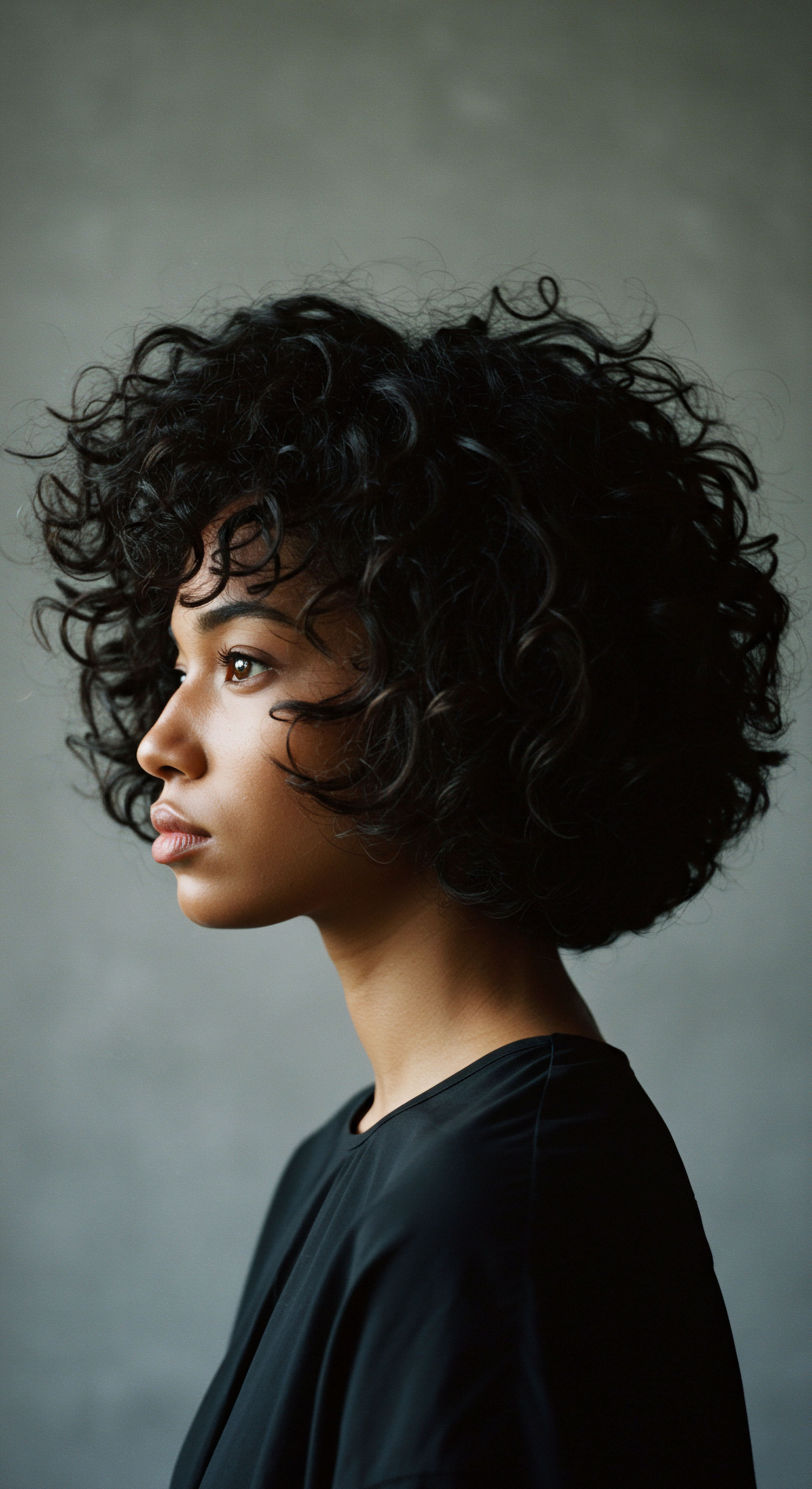
References
- Ahmadian, F. & Fakhree, M. (2009). Lawsonia inermis Linn (Henna) ❉ A Review of Its Ethnobotanical, Phytochemical and Pharmacological Aspects. Journal of Applied Sciences Research, 5(12), 2099-2104.
- Djerrou, Z. Maameri, Z. Hadj-Ali, S. Hammouda, F. & Djaalab, I. (2016). Burn Wound Healing Effect and Hair Growth Promoting Activity of Lawsonia inermis L. and Honey in Oryctolagus cuniculus Rabbits. OnLine Journal of Biological Sciences, 16(2), 82-89.
- Gallo, F. R. et al. (2014). Henna through the centuries ❉ A quick HPTLC analysis proposal to check henna identity. Forensic Science International, 244, 25-30.
- Rahim, M. A. et al. (2024). The Herbal Hue ❉ Formulation and Evaluation of Herbal Hair Dye. Pharmacognosy Research, 16(2), 294-299.
- Semwal, R. B. et al. (2014). Lawsonia inermis L. (henna) ❉ Ethnobotanical, phytochemical and pharmacological aspects. Journal of Ethnopharmacology, 155(1), 80-103.
- Sukumaran, S. et al. (2021). Henna Benefits for Hair ❉ How to Get Rich Auburn Locks. Healthline.
- Sultana, S. et al. (2013). Evaluation of hair growth promoting activity of Lawsonia inermis L. on albino rats. International Journal of Pharmacy and Pharmaceutical Sciences, 5(3), 670-673.
- Woo, H. S. (2007). The Study on the Color Change and Physical Property of Hair as Using Permanent and Henna dye. Kwangju Women’s University Master Thesis.
- Yadav, S. et al. (2202). Back to nature ❉ henna extracts from nanotech to environmental biotechnology – a review. Green Chemistry Letters and Reviews, 15(1), 1-19.
- Zhang, H. et al. (2023). Mechanisms of impairment in hair and scalp induced by hair dyeing and perming and potential interventions. Frontiers in Cell and Developmental Biology, 11, 1177653.